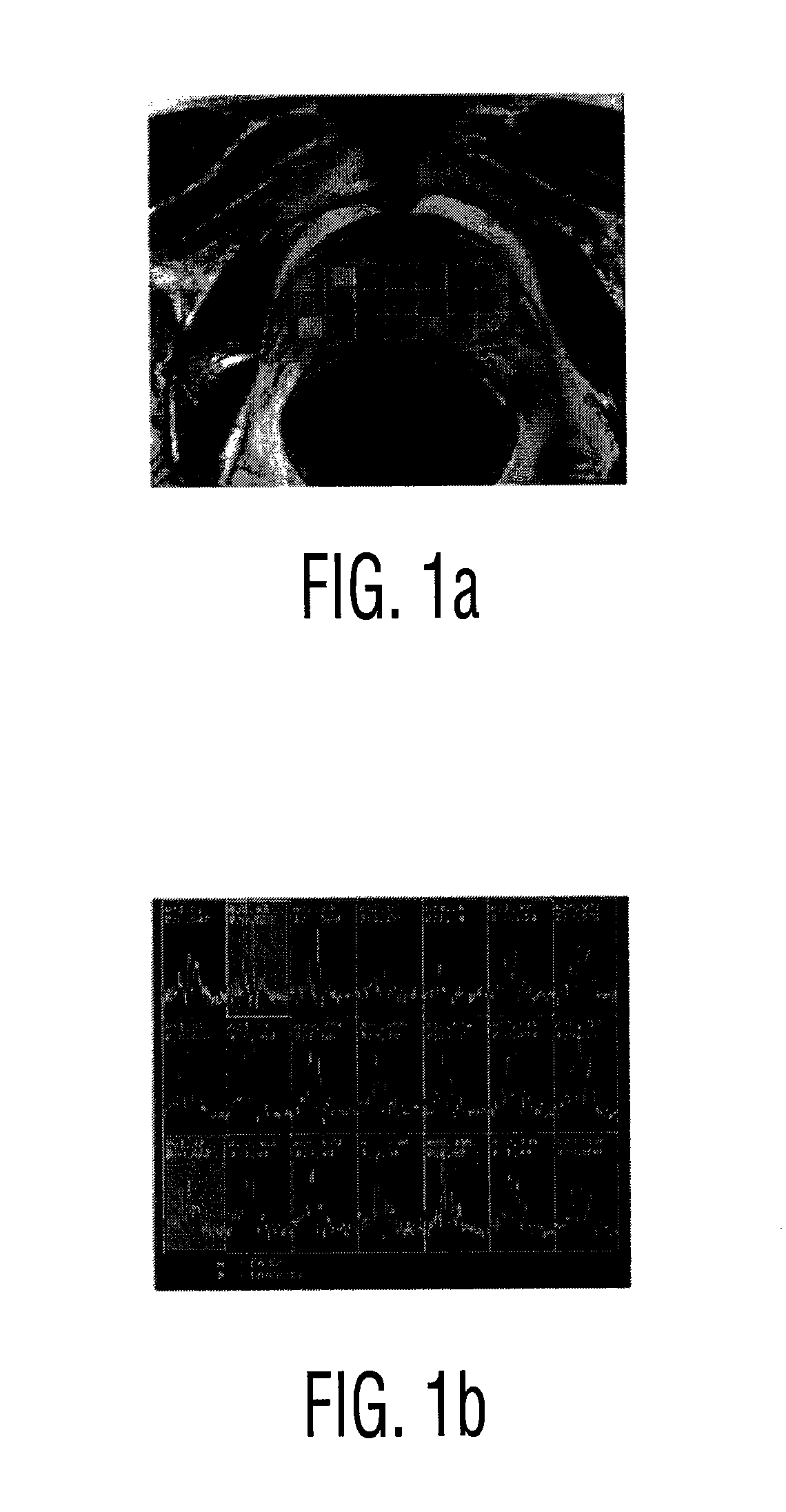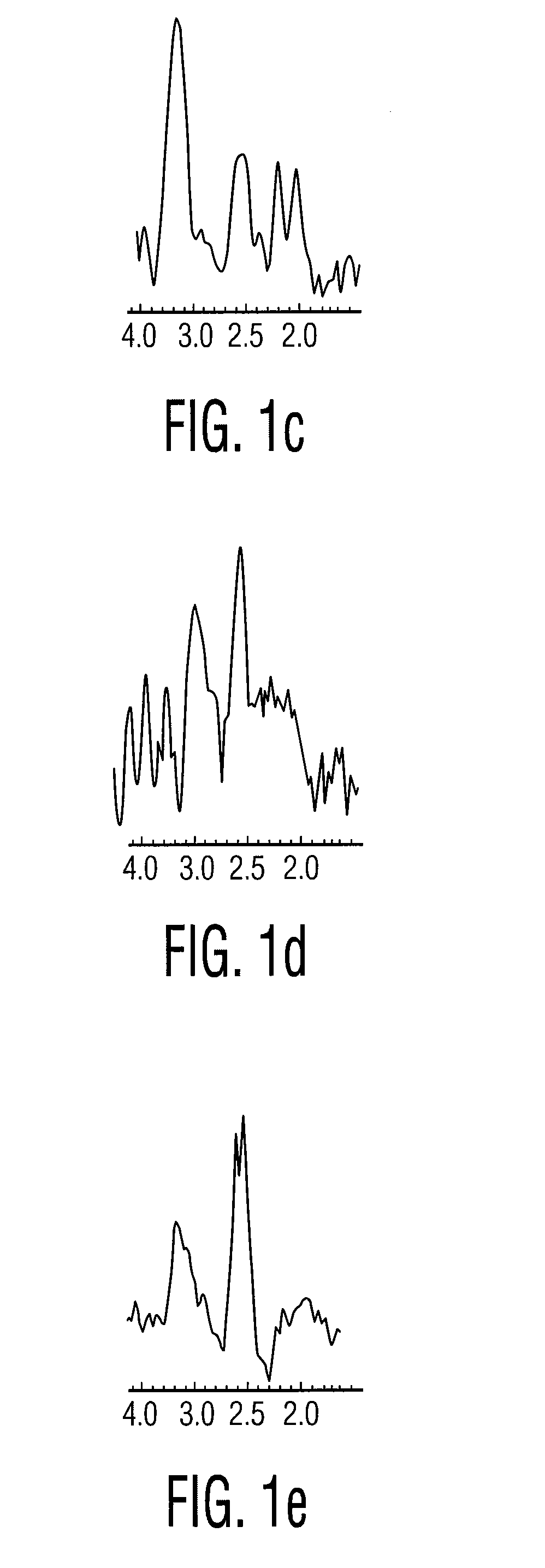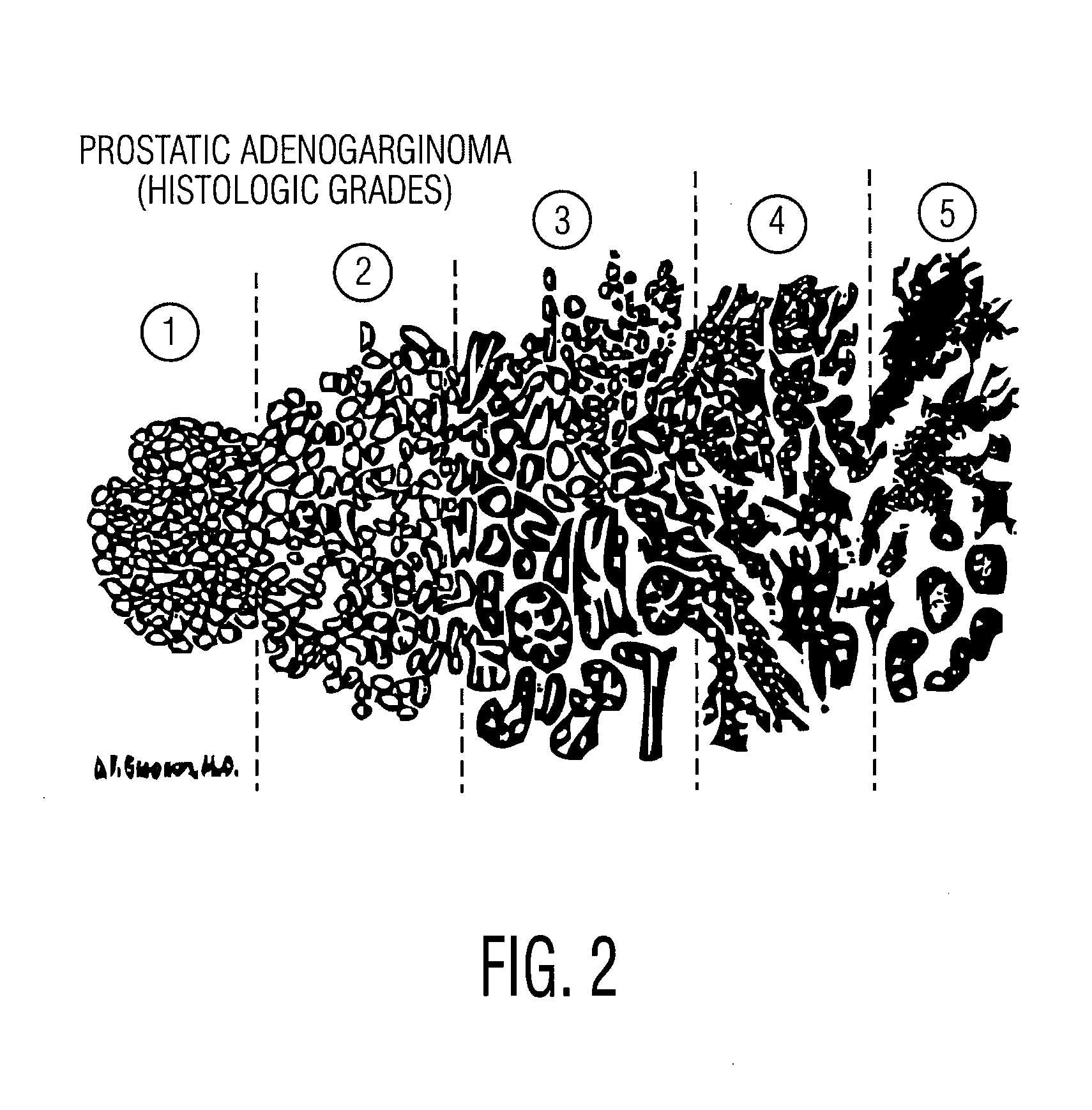Defining quantitative signatures for different gleason grades of prostate cancer using magnetic resonance spectroscopy
a technology of magnetic resonance spectroscopy and quantitative signatures, applied in image data processing, instruments, image enhancement, etc., can solve the problem of low detection accuracy (25%)
- Summary
- Abstract
- Description
- Claims
- Application Information
AI Technical Summary
Benefits of technology
Problems solved by technology
Method used
Image
Examples
Embodiment Construction
[0019]With increasing detection of early CaP with improved diagnostic methodologies (e.g. multi-protocol high resolution MRI / MRS), it has become important to predict biologic behaviors and “aggressivity” to identify patients who might benefit from a “wait and watch policy” as opposed to those patients who might be better suited to application of more aggressive strategies. In other words, clinically applicable prognostic markers are urgently needed to assist in the selection of optimal therapy. The inventors have been working on sophisticated machine learning algorithms to identify CaP on the prostate using MRS. With intent to find biological relevant CaP, in the current invention, the primary focus is on differentiating MRS signatures for different grades (low vs. high) of cancer. Improved algorithms have been developed such as consensus-locally linear embedding (C-LLE) and replicated clustering for unsupervised detection of CaP followed by Independent component analysis (ICA) to a...
PUM
 Login to View More
Login to View More Abstract
Description
Claims
Application Information
 Login to View More
Login to View More - R&D
- Intellectual Property
- Life Sciences
- Materials
- Tech Scout
- Unparalleled Data Quality
- Higher Quality Content
- 60% Fewer Hallucinations
Browse by: Latest US Patents, China's latest patents, Technical Efficacy Thesaurus, Application Domain, Technology Topic, Popular Technical Reports.
© 2025 PatSnap. All rights reserved.Legal|Privacy policy|Modern Slavery Act Transparency Statement|Sitemap|About US| Contact US: help@patsnap.com



